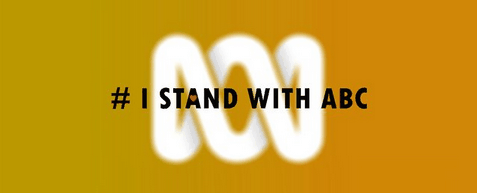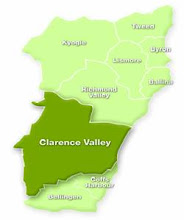~~~~~~~~~~~~~~~~~~
“Australia's
climate has warmed just over 1 °C since 1910 leading to an increase
in the frequency of extreme heat events….There
has been a decline of around 11 per cent in April–October rainfall
in the southeast of Australia since the late 1990s….There has been
a long-term increase in extreme fire weather, and in the length of
the fire season, across large parts of Australia….The year-to-year
changes in Australia’s climate are mostly associated with natural
climate variability such as El Niño and La Niña in the tropical
Pacific Ocean and phases of the Indian Ocean Dipole in the Indian
Ocean. This natural variability now occurs on top of the warming
trend, which can modify the impact of these natural drivers on the
Australian climate.” [Australian
Bureau of Meteorology, State
of the Climate 2018]
~~~~~~~~~~~~~~~~~~
On
the morning of 13 November 2017 New South Wales awoke to a state
still under siege from climate change
and drought
induced bushfires.
The
NSW
Rural Fire Service
reported 79
fires at 4.13am, with 4 at Emergency
Warning
level (out of control), 12 at Watch
And Act
level
and
50 at Advice
level.
The
largest Emergency
fire
was
in the Clarence
Valley
local government area (148,120 hectares), largest Watch
And Act
fire in Kempsey local government area (223,047
hectares) and largest Advice fire in Armidale local government area (113,900
hectares).
Thankfully, changing weather conditions over the day saw the Emergency Warnings reduced to Watch And Act and the number of serious fires reduced to 69 sites.
What
the general public also awoke to that morning was a continuing
attempt to blame shift on the part of federal and state Liberal and
Nationals politicians.
They
blamed the National
Parks and Wildlife Service and
the
Australian Greens political party, - shockingly in one instance it
was
even implied that
victims of these fires were themselves
to blame
because
they likely voted for the Greens.
In this they have been aided and abetted by Rupert Murdoch's News Corp metropolitan and regional newspaper empire as well as members of that climate change denying lobby group the Institute of Public Affairs (IPA).
What
these
rightwing politicians
refuse to publicly admit is that in
Australia climate
change is intensifying heat, reducing
rainfall, increasing water
evaporation rates, raising
the severity levels
of drought,
lengthening
fire seasons
and
causing bushfires to morph into mega fires.
Nor
would these politicians admit that since 2013 the national response to
climate change has
become insufficient for the scale of problems now
facing
the country.
Here
is how media is presenting this issue. Leading the pack is a News Corp journalist who happens to also be an enthusiastic climate change denier…...
The Daily Telegraph, 13 November 2019, p.13:
For eighty years, inquiries have found reducing hazards is the best, most immediate way to prevent bush fires, but green policies have led us to learned helplessness
Even a hippie in Nimbin knows that greenies are to blame for the power and intensity of NSW’s latest bout of tragic bushfires.
“The Greens have to cop it on the head — they have been obsessed with no fires and no burning,” Michael Balderstone told the Australian as bushfires engulfed the north coast.
Wiser words have never been spoken in that Northern Rivers town. Yet Greens leader Richard Di Natale and Melbourne MP Adam Bandt still insist that the culprit is climate change.
It’s a self-fulfilling prophecy. They oppose any sensible land management that is proven to reduce the severity of routine regular summer bushfires.
And when the inevitable happens they blame climate change.
Their aim is to scare people into buying their climate “emergency” hyperbole so that government is under pressure to enact suicidal policies which drive electricity prices through the roof.
But it is not climate change which turns fires into unstoppable lethal infernos. It is green ideology which blocks removal of fuel loads in national parks and prevents landholders from clearing fire hazards around their homes.
The Guardian, 13 November 2019:
Bureaucrats
from the NSW Department of Planning, Industry and Environment were
sent an email soon after the AdaptNSW 2019 Forum began, causing
consternation among some attendees who saw it as tantamount to
gagging them.
The
email said: “For those attending AdaptNSW today, public affairs has
issued advice not to discuss the link between climate change and
bushfires.
“Refer
questions in session and plenaries to bushfire reps.”
What
are the links between climate change and bushfires? – explainer
Read
more
Former
NSW fire commissioner Greg Mullins was one of the attendees.
But
the participants also included scientists and experts who are
developing policy and advising the Berejiklian government on adaption
measures the state could take in relation to land use, planning and
dealing with the risk of bushfires.
SBS
News, 12 November 2019:
What does the science say?
The
overwhelming scientific consensus is that Australia's fire season is
growing longer and more intense due to the effects of climate change.
The
report said climate change has seen an increase in extreme heat
events and increased the severity of natural disasters, such as
drought.
"There
has been a long-term increase in extreme fire weather and in the
length of the fire season across large parts of Australia since the
1950s ... Climate change, including increasing temperatures, is
contributing to these changes," it said.
Some
in the federal government have attributed the increased risk on
newly-imposed restrictions on hazard reduction burning -
low-intensity burns to remove vegetation so bush or grass fires are
less intense.
It
is different to backburning, which specifically refers to the
starting of small, controlled fires in the path of a bushfire to
reduce the amount of fuel available……
Are
hazard reduction restrictions to blame?
Some
in the federal government have attributed the increased risk on
newly-imposed restrictions on hazard reduction burning -
low-intensity burns to remove vegetation so bush or grass fires are
less intense.
It
is different to backburning, which specifically refers to the
starting of small, controlled fires in the path of a bushfire to
reduce the amount of fuel available.
But
David Bowman, director of the Fire Centre Research Hub at the
University of Tasmania, said restrictions on hazard reductions are
not entirely to blame.
"At
the very core, we have a climate signal. There's extreme drought,
extreme fire weather conditions - fire weather that you would expect
in summer, not in spring,” he told the ABC on Monday.
"Yes,
there is a role for managing fuels with hazard reduction burning -
but would hazard reduction burning programs on their own stem this
fire crisis? No, absolutely not."
What
can we expect now?
The
BOM said 2017 and 2018 were Australia's third and fourth-hottest
years on record.
"What
all the evidence is showing us (is) that the temperature is sitting
about one degree above long-term averages. That is leading to a much
earlier start fire season around the world. That is internationally
noted,” BNHCRC CEO Richard Thornton said.
"We
are also seeing the cumulative amount of fire danger during a fire
season going up - the time between these really extreme fire years
will get shorter and shorter and shorter.
"We
will see these conditions come around more frequently."
So
what are the claims?
The
chief accuser is Nationals MP Barnaby Joyce who says “greens
policy” gets in the way “of many of the practicalities of
fighting a fire and managing it”.
Among
Joyce’s claims, made in several interviews this week, are that
Greens policies have made hazard reduction activities more difficult.
This
claim, just to be clear, is about the policies of a party that has
never been in government.
Joyce
also blamed the Greens for “paperwork” that made it harder to
carry out hazard reduction activities….
“It’s
not burning because they burnt off, it’s burning because they
didn’t burn off,” Joyce told SkyNews.
According
to Bradstock, Joyce’s claims are familiar but “without
foundation.”
“It’s
simply conspiracy stuff. It’s an obvious attempt to deflect the
conversation away from climate change.”
A
former NSW fire and rescue commissioner, Greg Mullins, has written
this week that the hotter and drier conditions, and the higher fire
danger ratings, were preventing agencies from carrying out prescribed
burning.
He
said: “Blaming ‘greenies’ for stopping these important measures
is a familiar, populist, but basically untrue claim.”
A
fierce feud has ignited between NSW Deputy Premier John Barilaro and
the National Parks and Wildlife Service following revelations the
number of rangers, who perform hazard reduction burns, has been cut
by a third since the Coalition came to power in 2011.
The
Public Service Association has accused Mr Barilaro of gross hypocrisy
after the Deputy Premier blamed the department for contributing to
the state’s catastrophic fire conditions by failing to carry out
extensive hazard reduction in the lead-up to bushfire season,
labelling his comments “worse than an insult”.
Apart
from last financial year, the NPWS has not met its annual hazard
reduction target of 135,000ha since 2016.
PSA
industrial manager Nathan Bradshaw blamed the failure to meet targets
on severe cuts to staffing levels, saying that since 2011, the
department’s 289 rangers, including 28 senior rangers, had been
trimmed to 193.
Following
a restructure in 2017, the NPWS’s number of area managers was cut
from 50 to 37, he said.
Mr
Bradshaw said the Office of Environment and Heritage’s budget had
been further depleted by $80m this year, and the NPWS was absorbing
part of the cut.
He
said the cutbacks had directly affected the department’s ability to
operate efficiently.
In
2012-13, the NPWS was involved in 208,000ha of hazard reduction; in
2016-17, that was just 88,136ha, and just 95,589ha in 2017-18.
However, the government said the amount of hazard reduction had
increased in 2018-19, with “NPWS undertaking 137,500ha of
prescribed burns, which is above its target of 135,000ha”.
Crikey, 12 November 2019:
As politicians argue over whether the “unprecedented” bushfires ravaging NSW are linked to climate change — or whether it’s appropriate to bring it up at all — the latest Brown to Green Report ranked Australia third-worst in terms of progress toward meeting its Paris goals. The report states Australia is not even on track to meet its “insufficient” 2030 targets, and highlights a poor response on deforestation, transport, energy supply and carbon pricing. The international report was compiled by 14 NGOs, thinktanks and research institutes.
A STATE OF EMERGENCY
About 600 schools will be closed across NSW today, with a week-long state of emergency declared, as the east coast braces for an unprecedented and “catastrophic” fire risk, the ABC reports.
More than 60 bushfires continue to burn across the state, with the Bureau of Meteorology forecasting “hot, dry and gusty winds” that “will generate very dangerous fire conditions”. The NSW Rural Fire Service is warning that firefighters will not be able to help everybody if a fire takes hold, releasing a statement declaring “if you call for help, you may not get it”. NSW RFS deputy commissioner Rob Rogers says the situation is worse than he could have imagined, telling reporters: “If someone came to me and said ‘let’s do one of the scenario role-plays’, I would be saying, ‘let’s try to keep this a bit more realistic’”.
BACKGROUND
NSW
Rural Fire Service (NSWRFS), Hazard Reduction Standards:
Fire
Trail Standards.pdf (PDF, 5.6 MB)
Terms used by NSWRFS:
Emergency
Warning: An Emergency Warning is the highest level of
Bush Fire Alert. You may be in danger and need to take action
immediately. Any delay now puts your life at risk.
Watch
and Act: There is a heightened level of threat.
Conditions are changing and you need to start taking action now to
protect you and your family.
Advice:
A fire has started. There is no immediate danger. Stay up to date in
case the situation changes.




